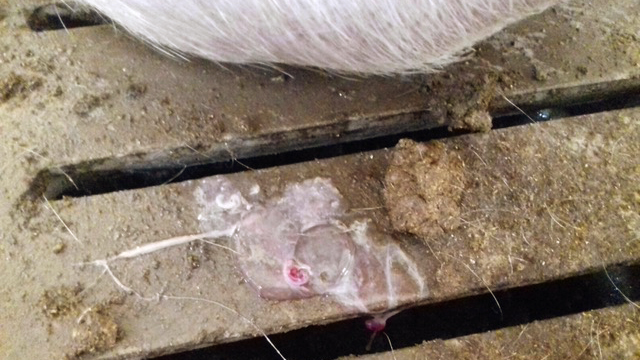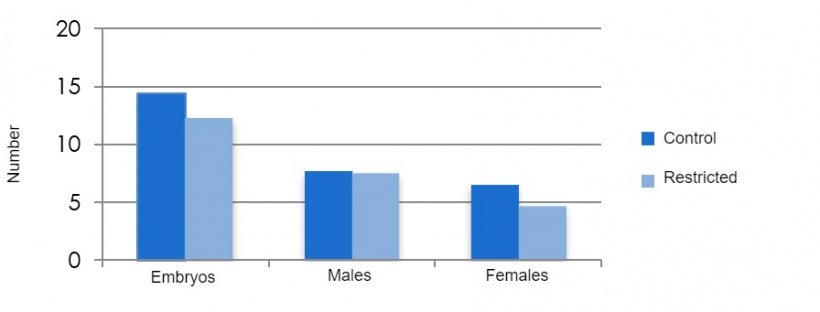Irregular returns to estrus occur from 25 to 37 days post-service. A sow has an irregular return (abnormally long estrous cycle) when all the embryos have been lost (< 35 days of gestation) and are reabsorbed, or when only 5 or fewer embryos remain at 10 days of gestation.
Under normal conditions, these should account for a very small percentage of the matings < 3%.

Among the non-infectious causes we must differentiate between those related to the environment, to the sow, and to feeding.
• Environmental causes: Environmental situations that cause stress on the sows. Summer is perhaps the most frequent cause of irregular returns, but drafts, significant temperature fluctuations, cold environmental temperatures (< 16°C) or high humidity conditions can also cause this type of gestation losses. Irregular returns have been associated with catabolic states (low daily intake coupled with low environmental temperature) and sometimes the expulsion of embryos can be observed (Photo 1). It is common to observe an increase in vulval discharges in this type of situation. Moving sows before 35 days of gestation can also be stressful enough to cause embryonic mortality. Although it has never been proven, it is believed that insufficient light levels during the first month could be related to an increase in embryonic mortality and therefore to more irregular returns.

Photo 1. Embryo expulsion.
• Sow-related causes: Early breeding of gilts is associated with an increase in irregular returns. Extremely thin sows that may have poor ovulation would be more likely to have regular and irregular returns.
• Feeding-related causes: Poor feeding during lactation is associated with higher embryonic mortality.

Relation between feeding during lactation and embryo survival. Vinsky, M. D. et al. (2005) Nutritional restriction in lactating primiparous sows selectively affects female embryo survival and overall litter development. Reproduction, Fertility and Development 18(3) 347–355
See the infectious causes of irregular returns ![]()
Use the button above or the flowchart to continue troubleshooting the returns, or access other parts of the tool.





